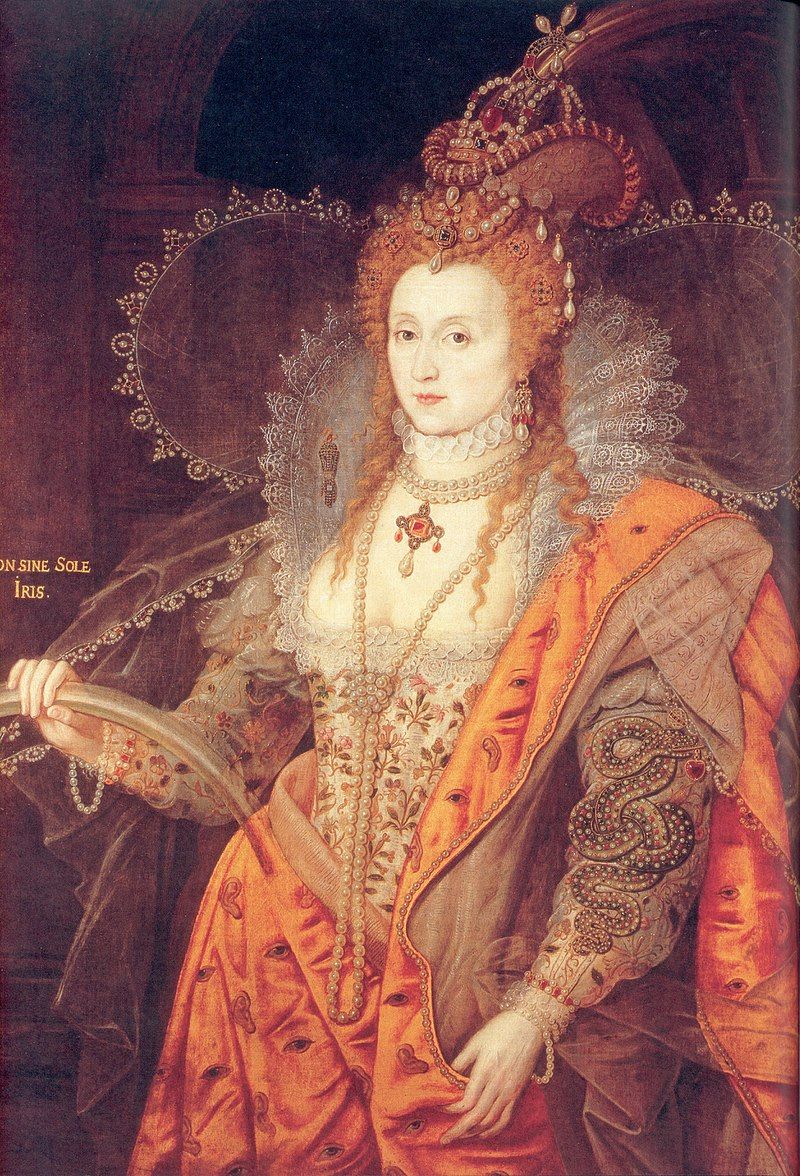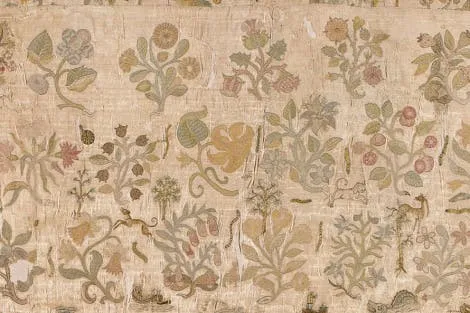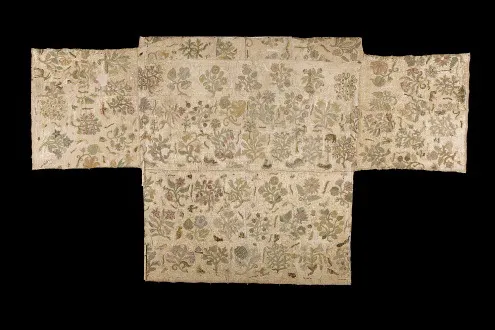See Scrap of Cloth Believed to Be From Elizabeth I’s Only Surviving Dress
The fabric, set to go on view, was previously used as an altar cloth in a small village church
/https://tf-cmsv2-smithsonianmag-media.s3.amazonaws.com/filer/29/00/29009b8e-5e8b-4a04-ac76-5b07ade2b16c/bacton-altar-cloth-detail-c-historic-royal-palaces-courtesy-of-st-faiths-church-bacton-768x512.jpg)
When Elizabeth I died in 1603, her wardrobe encompassed more than 2,000 sumptuously tailored gowns, from cloth of gold trimmed with ermine and jewels to pearl-draped dresses made of the finest fabrics. Today, little of this attire survives: As Eleri Lynn, a curator for England’s Historic Royal Palaces, explained to the Telegraph’s Gordon Rayner in 2017, most articles of royal clothing were so expensive that they ended up recycled or gifted to those in a monarch’s service. Combined with the fact that Parliamentarian Oliver Cromwell sold most of the items in the royal stores after seizing power, the few extant examples of Tudor clothing tend to be those that escaped court prior to the English Civil War.
Until recently, historians believed that none of Elizabeth’s clothing had survived to modern times. In 2016, however, Lynn chanced upon an embroidered scrap of silk researchers now say was almost certainly worn by the queen herself. The fabric—once used as an altar cloth at St. Faith’s Church in Bacton, Herefordshire, and now extensively restored following 1,000 hours of conservation—is set to go on view at Elizabeth’s former home, Hampton Court Palace, this October.
According to the Telegraph’s Dalya Alberge, the cloth likely landed in Bacton thanks to the village’s association with Blanche Parry, one of the Tudor regnant’s longtime attendants. Parry, who was born in Bacton around 1508, watched over Elizabeth while she was still in the cradle and remained in the queen’s service until her death in 1590. As Lynn tells Alberge, it’s possible Elizabeth’s ladies-in-waiting sent the textile to Parry’s hometown church in hopes of paying tribute to their friend.
The silver chamblet silk fabric, embroidered with gold and silver thread and cut in a manner suggesting it once constituted two sections of a skirt, bodice and sleeves, closely resembles the gown donned by Elizabeth in the so-called “Rainbow Portrait.” Painted by artist Marcus Gheeraerts the Younger around 1600, the symbol-laden work features a seemingly ageless monarch in her prime. This carefully cultivated image, similar to that seen in many later portraits of the queen, strives to maintain the myth of Elizabeth’s youthful beauty by masking the hallmarks of old age. Per Hampton Court Palace, the portrait, on loan from Hatfield House, will be displayed alongside the Bacton altar cloth, as well as a replica of the original dress to which the fabric belonged.
Alberge of the Telegraph writes that the cloth measures more than 6.5 by 3 feet. It is embroidered with wildlife, including caterpillars, butterflies, frogs and flowers, and contains narrative scenes such as a sea monster towering over an empty boat. Unlike most embroidered work, which was created on canvas, cut out and appliquéd to other fabrics, the Bacton cloth’s embroidery was sewn directly onto cloth of silver.
“The embroiderer is saying, ‘I’m not going to make a mistake,’ demonstrating that they have such a level of skill that they can afford to embroider through cloth of silver,” Lynn tells the Telegraph. “This is a masterpiece. … There is no other surviving example of this technique anywhere.”

In 2018, Lynn wrote a journal article outlining the argument for attributing the cloth to Elizabeth. Published in Costume, the study notes that locals had long believed Parry worked on the fabric herself and later gifted it to the church, which boasts a memorial to the royal attendant. In 1909, however, Reverend Charles Brothers ordered the cloth framed, asserting that it could have once been “worn by Queen Elizabeth.”
As Lynn explains, there is no documentary evidence supporting the idea that the cloth belonged to either Elizabeth or Parry. Still, she writes, records show that the queen often gifted her beloved attendant various fineries and perhaps “retained enough affection for Blanche to donate the valuable skirt fabric in memory of her.” The exceptionally skilled workmanship evident on the cloth—“This quality suggests that it was intended for the highest level of customer,” Lynn notes, pointing out that Elizabeth enforced sumptuary laws prohibiting other women from wearing such finery—and the fact that it was used as a sacred, and therefore revered, item, further supports the argument for its royal origins.
“When I saw it for the first time I knew immediately that it was something special,” Lynn tells the Telegraph’s Rayner. “As I examined it, I felt as though I had found the Holy Grail, the Mona Lisa of fashion. None of Elizabeth I’s dresses are known to have survived, but everything we have learnt since then points to it being worn by Elizabeth.”
The lost dress of Elizabeth I will be on display at Hampton Court Palace from October 12, 2019, through February 23, 2020.
/https://tf-cmsv2-smithsonianmag-media.s3.amazonaws.com/accounts/headshot/mellon.png)


/https://tf-cmsv2-smithsonianmag-media.s3.amazonaws.com/accounts/headshot/mellon.png)